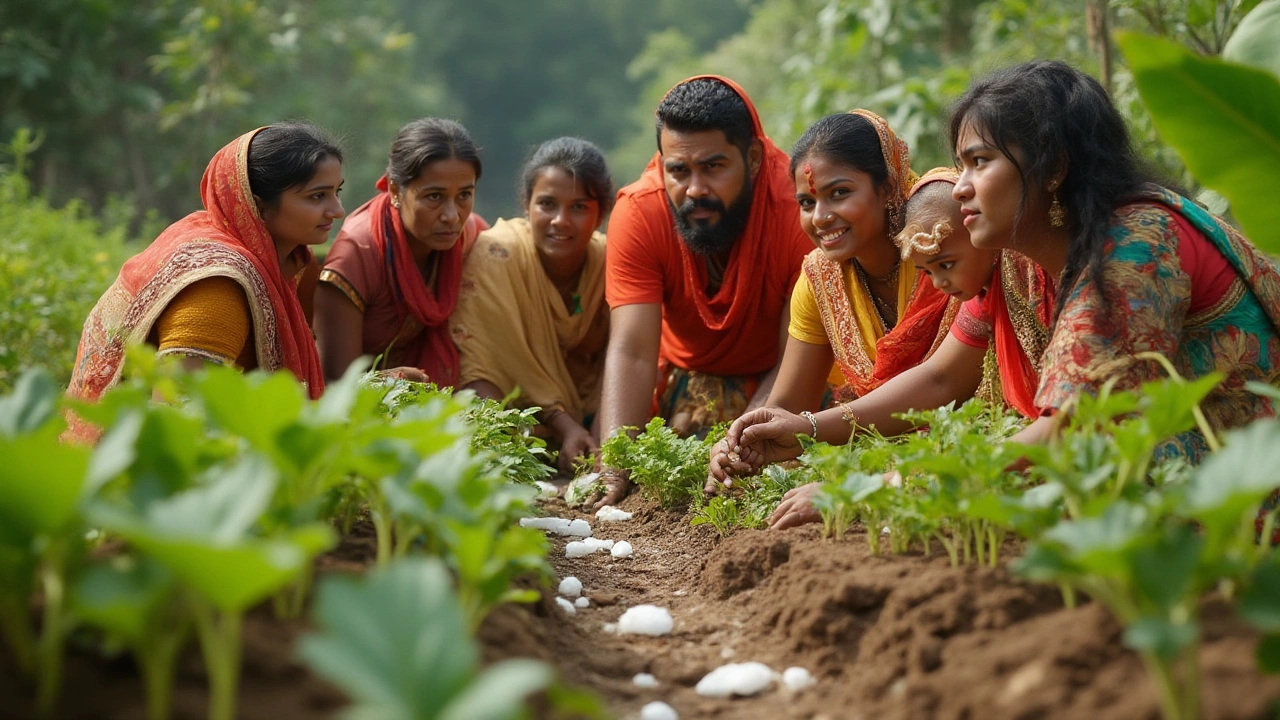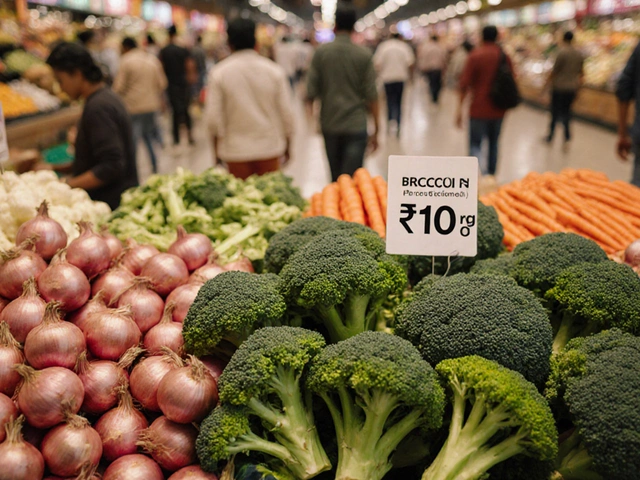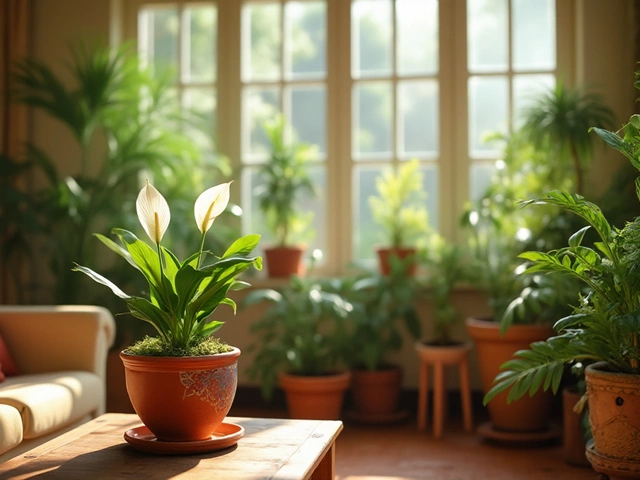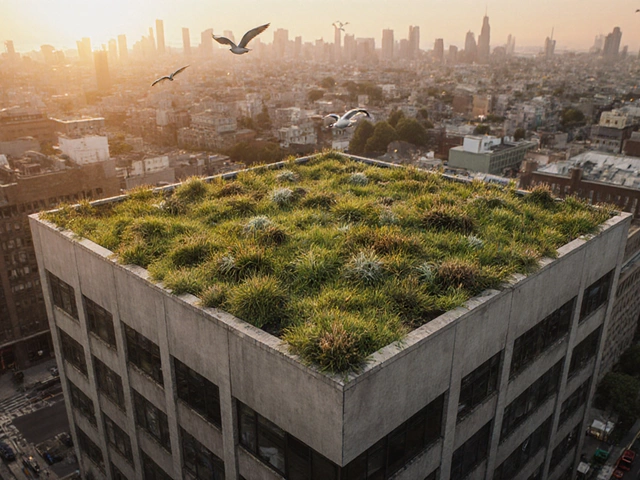Picture this: you’re prepping a fresh raised bed, and a neighbor suggests tossing leftover Styrofoam packing peanuts into the bottom for drainage. It feels like an easy win—less soil, extra insulation, and you clear out some trash. But a nagging doubt lingers. Is Styrofoam actually safe for your tomatoes and peppers, or are you inviting trouble into your patch?
The Science Behind Styrofoam in Gardens
Styrofoam is everywhere—from takeout containers to electronics packaging. Technically, most 'Styrofoam' folks talk about is expanded polystyrene foam (EPS). It doesn’t dissolve in water, barely breaks down in sunlight, and can hang around for centuries. That’s not just theory—a study by Stanford University found that, under normal outdoor conditions, a polystyrene cup takes at least 500 years to start degrading. That means any block of EPS buried in your garden will outlast your carrots by a couple dozen human lifetimes.
People use Styrofoam in gardens as a soil lightener or drainage booster. It’s sold as a hack—just mix it with potting soil, or line raised beds to save dirt and make containers lighter. Sounds clever. But issues run deeper. For one, EPS is made from petroleum, with styrene as a key building block. The U.S. National Toxicology Program lists styrene as “reasonably anticipated to be a human carcinogen.” That means, yeah, health agencies are watching its use like hawks. But here’s the real debate: does styrene actually leach out of EPS into garden soil? Most research says it doesn’t leach much at normal garden temperatures. Plants have a tough time absorbing big plastic chunks—or even the smaller bits that flake off when foam breaks down.
But nothing’s black and white. When gardeners chop, poke, or abuse the foam, some microplastics and fine particles break loose, settling into the soil. Rain and intense sunlight can speed up fragmentation. And here’s the kicker: nobody’s done a long-term study on how little bits of EPS in soil affect crops over ten or twenty years. No two scientists agree on the safe threshold.
Concerns Over Chemicals and Microplastics
Let’s pull back the curtain on chemical worries. EPS is stable in cool, shady places. But when hit by heat, acids, or sunlight, it can slowly release styrene and other chemicals. According to the Agency for Toxic Substances and Disease Registry (ATSDR), high doses of styrene can cause nervous system problems, though gardening isn't likely to expose you to those levels. Still, no one wants even trace problems in plants meant for the dinner table.
Lab tests show that most vegetable roots won't absorb styrene directly under normal soil conditions, but microplastics—tiny shreds of foam—can linger and end up moving with water. In 2022, a German research group found microplastics in the roots of common crops like lettuce and carrots, even in fields thought to be clean. How did they get there? Floating on wind, from rainwater, or from plastic bits already in the soil. Styrofoam doesn't just break down; it splinters into smaller and smaller fragments, which can be taken up by worms and eventually work into the food chain. It's not about the single peanut you throw in this year, but the mounting plastic load if lots of gardeners do the same every season.
Mixing foam into raised beds can also cause drainage issues long-term. At first, water zips right past the foam. But over time, soil sifts down through gaps, clogging them, turning that once-loose fill into a soggy, compacted mess—especially if you grow in small containers. Foam absorbs almost zero water, so roots passing through those zones get no real moisture or nutrients. Pretty rough for thirsty summer crops.
"Using non-biodegradable foam in personal or community gardens is a gamble—the long-term effects are a giant question mark. We just don't know, and that's not very reassuring to most growers." — Professor Melanie Brown, Soil Health Program, University of Minnesota
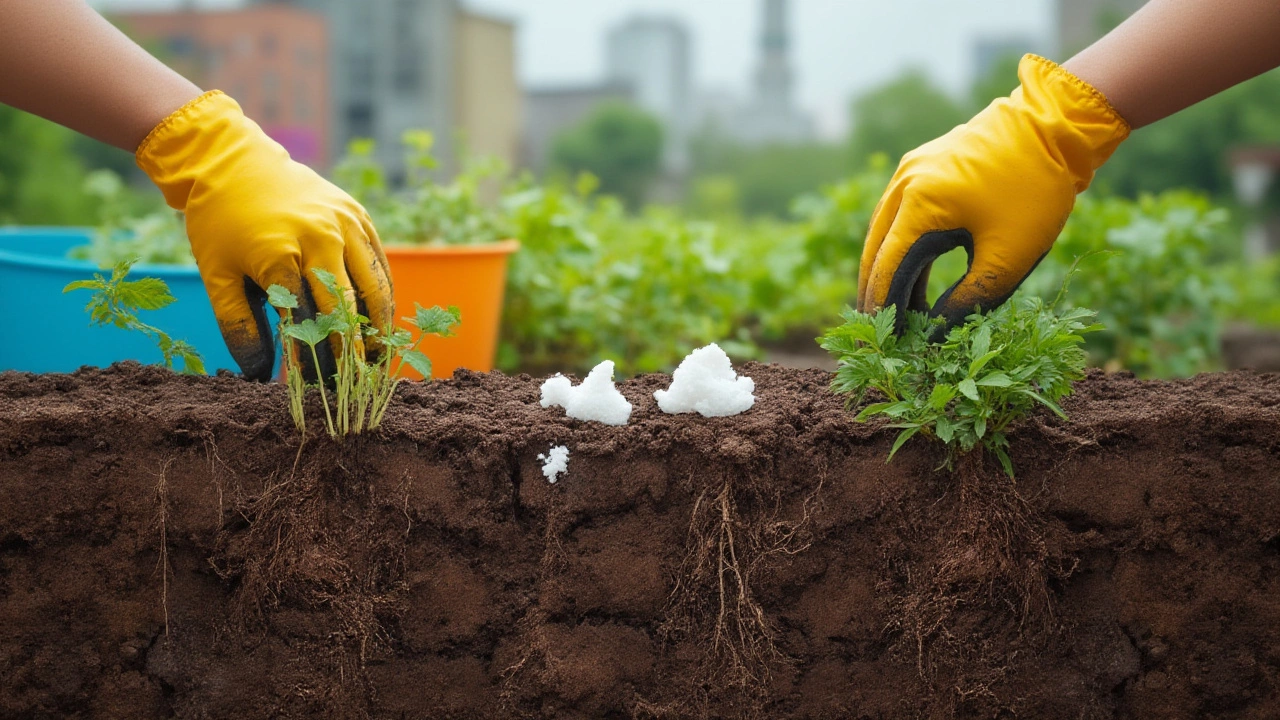
Real-Life Pros and Cons: Gardeners' Experiences
Some gardeners swear by using foam for filling the base of big pots. They say it’s lighter and cheaper than filling with pure soil or expensive rocks. You’ll read tips all over gardening forums: “Toss a handful of packing peanuts in the bottom!” But after a year or two, these same folks sometimes post updates: their tomatoes look stunted, the soil is bone-dry on top but weirdly swampy near the foam, and they dig up a yellowing root ball tangled in crumbly white foam bits. Peppers that should have pumped out dozens of fruit look weak, while moisture-hungry greens droop by midday.
The biggest complaint? Foam doesn't add anything useful to the soil. It doesn’t provide minerals, nutrients, or even lasting structure. On top of that, scavenging fauna—worms, beetles, and even stray birds—can scatter the foam as they hunt for food, making a mess in your yard. If you ever need to remove or renovate your bed, you’ll be picking out sticky bits for hours. If you live somewhere windy, good luck keeping the stuff from blowing around; you'll spot it in garden corners for years.
Some gardeners have tried so-called “biodegradable” packing peanuts. Heads up—those are usually made from corn starch and dissolve in water. Unlike EPS, they’re safe for food gardens and disappear after a rainstorm. If you want the lightness without the risks, these are a safer bet. But you have to keep them dry during setup, or your drainage hack magically vanishes before planting day.
There are old tricks that still beat foam for drainage. Broken terracotta pots or ceramic shards let water pass while keeping soil in place. Gravel, coarse sand, wood chips, or even crunched-up leaves all do a better job, and they add nutrients as they decompose. See it like this: if you're adding something to your garden, make sure it benefits the plants now or improves the soil in coming years. Foam just sits there—almost forever.
What the Experts Say
If you talk to master gardeners or check with university extensions (like those at UC Davis or the Royal Horticultural Society), most urge caution. Their bottom line, boiled down: foam isn’t technically toxic, but it doesn’t belong in vegetable plots. There’s always the tiny risk of contamination, plus the headache of cleaning up. Even the Environmental Protection Agency (EPA) doesn’t officially ban polystyrene for home gardens—but they don’t recommend it either.
Major commercial growers avoid using foam, even when cost-cutting matters a lot. Instead, they focus on compost, perlite, coconut coir, and sand. These boost drainage without leaving plastic litter. Organic certifiers ban polystyrene in certified growing operations—you won’t see it in soil labeled 'USDA Organic.' This sets a strong precedent: if it’s not OK for organic farms, why risk it in backyard patches?
Here’s another angle—kids and pets. Dogs sometimes dig up planters, and birds might snatch at exposed foam. If you have little ones playing nearby, plastic bits can get everywhere. And nobody wants to explain Styrofoam-laced soil on the school show-and-tell day.
Cautious voices stress that we haven’t mapped out the full environmental impacts. With plastics steadily piling up worldwide, every bit counts. Choosing alternatives is more about the spirit of stewardship than fear of immediate harm.

Best Practices for Safe, Productive Vegetable Gardens
So, what should you use instead of Styrofoam to keep your soil loose and beds well-drained? Start with the classics. Here’s a quick cheat sheet:
- Perlite and vermiculite: natural volcanic rocks, lightweight, boost drainage, and never turn mushy.
- Coco coir: made from coconut husks, both sustainable and great for moisture retention.
- Compost: adds structure, nutrients, and life to soil.
- Pine bark or wood chips: as a mulch or sub-layer, they slowly break down and feed soil life.
- Broken pottery or gravel: helps the bottom of big pots drain and never rots away.
- Biodegradable peanuts: dissolve in water, safe for veggie gardens if you want a lightweight solution.
If you have an old pile of foam to get rid of, check for community recycling or drop-off sites. Never burn it—melting Styrofoam releases toxic fumes, worse for the environment than just trashing it.
Here’s something to make you think: according to the Environmental Protection Agency, the U.S. produces about 3 million tons of polystyrene waste each year, but only about 1% is recycled. The rest winds up in landfills or scattered in the wild. What we do at home matters.
| Material | Decomposition Time | Safe for Edibles? | Improves Soil? |
|---|---|---|---|
| Styrofoam (EPS) | 500+ years | No | No |
| Compost | 2-12 months | Yes | Yes |
| Perlite | Infinite | Yes | Yes (drainage) |
| Biodegradable peanuts | 1-12 months | Yes | No (breaks down fast) |
| Gravel | Infinite | Yes | Not much, just drainage |
The bottom line: there’s no magic shortcut. Healthy veggies come from living, rich, well-aerated soil, not quick tricks or artificial fillers. If you want the best for your garden—and your table—skip the Styrofoam and give your soil the care it deserves. Styrofoam might be everywhere, but it doesn’t belong in the food you grow for your family. Stick with solutions that feed the earth as much as your crops.
